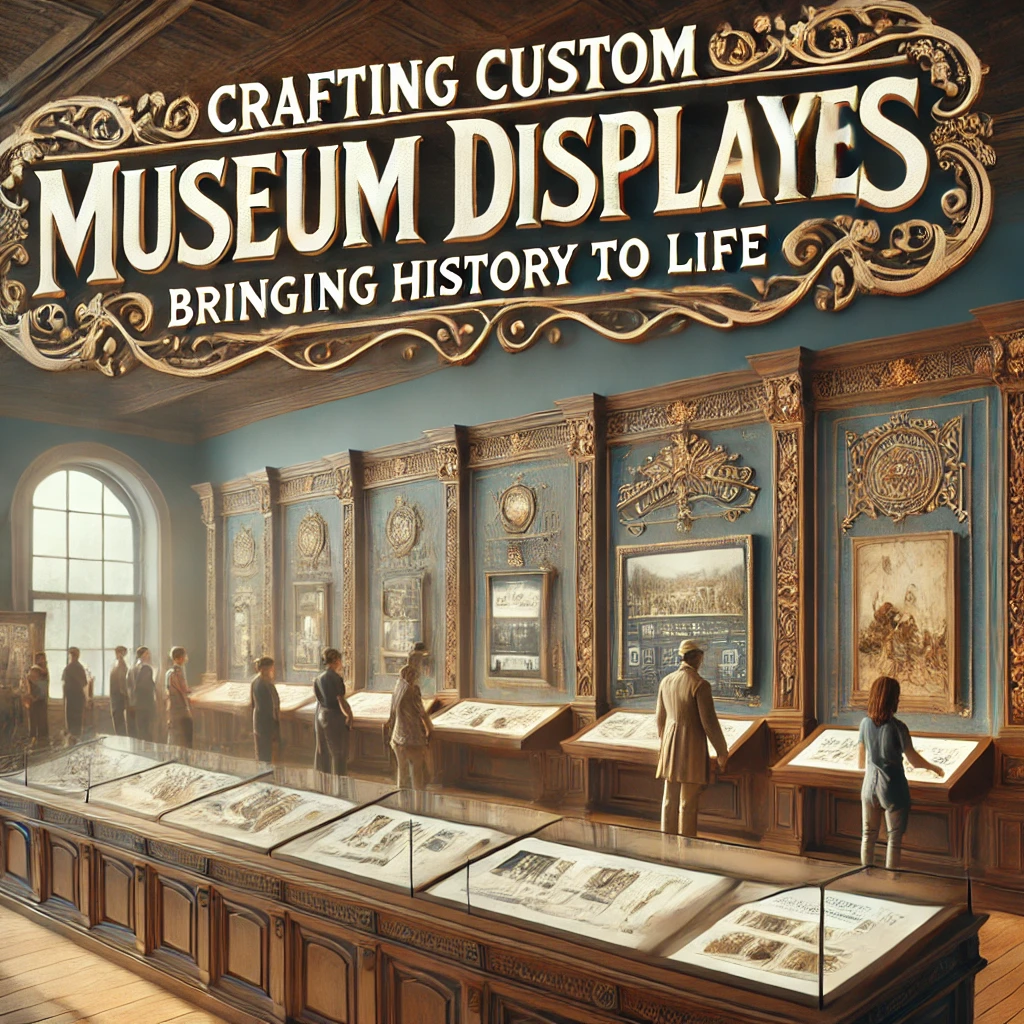In the heart of every museum lies a story waiting to be told. The evolution of custom museum displays has transformed these stories from static exhibits into immersive experiences that captivate visitors and bring history to life. As a British writer with an appreciation for both history and innovation, I am thrilled to explore the intricate process behind the development of these bespoke displays.
The Essence of Custom Museum Displays
Custom museum displays are more than just arrangements of artifacts; they are meticulously crafted narratives that combine art, design, and technology. The aim is to create a cohesive and engaging experience that resonates with diverse audiences. This involves a multi-disciplinary approach, drawing on the expertise of historians, designers, architects, and interactive technology specialists.
Conceptualization and Design
The journey begins with a deep understanding of the museum’s vision and the story it aims to tell. Curators and historians provide the foundational narrative, outlining key themes, artifacts, and historical context. Designers then translate these ideas into visual and spatial concepts, considering factors such as layout, lighting, color schemes, and visitor flow.
Interactive elements are increasingly integral to modern displays. Touchscreens, augmented reality, and multimedia presentations offer dynamic ways to engage with content, making history accessible and engaging for all ages. These elements must be seamlessly integrated into the design, enhancing the narrative without overshadowing the artifacts.
Fabrication and Installation
Once the design is finalized, the fabrication process begins. This involves crafting display cases, mounts, and interactive elements to exact specifications. High-quality materials are selected for their durability and aesthetic appeal, ensuring the displays are both functional and visually striking.
Installation is a meticulous process, often requiring coordination with the museum’s existing infrastructure. Lighting plays a crucial role, not only in highlighting artifacts but also in creating an atmosphere that complements the exhibit’s theme. Every detail, from the positioning of artifacts to the placement of informational plaques, is carefully considered to ensure a harmonious and immersive experience.
The Role of Technology
Technology has revolutionized museum displays, offering new ways to present information and engage visitors. Interactive screens can provide detailed information about artifacts, while augmented reality allows visitors to see historical events come to life before their eyes. These technologies create a dynamic learning environment, making history tangible and memorable.
Challenges and Innovations
Developing custom museum displays is not without its challenges. Balancing historical accuracy with engaging presentation requires careful consideration. Artifacts must be preserved and displayed in conditions that prevent deterioration, often necessitating climate control and specialized lighting.
Innovations in sustainable materials and energy-efficient technologies are also becoming a priority. Museums are increasingly looking for ways to reduce their environmental footprint while maintaining the highest standards of display quality.
Future Trends
As technology continues to advance, the future of custom museum displays looks incredibly promising. Virtual reality offers the potential for entirely immersive historical environments, allowing visitors to step back in time and experience history firsthand. Enhanced data analytics can provide insights into visitor behavior, helping museums tailor their exhibits to better meet the interests and needs of their audiences.
In conclusion, the development of custom museum displays is a fascinating blend of art, history, and technology. These bespoke creations transform museums into living, breathing spaces where the past is not just observed but experienced. As we continue to innovate and push the boundaries of what is possible, custom museum displays will undoubtedly play a crucial role in preserving and sharing our shared heritage.



